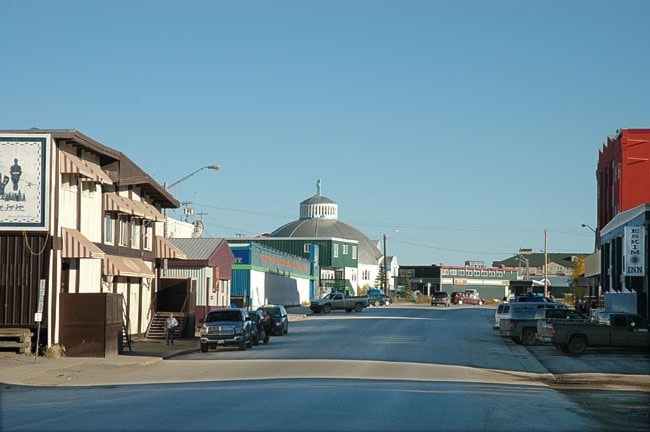The N.W.T. economy looks like it is headed for some tough sledding and, in response, the territorial government is pushing forward plans to invest more aggressively in growth.
While the diamond mines and the federally-backed highway project from Inuvik to Tuktoyaktuk have boosted the headline gross domestic product figures recently, finance minister Michael Miltenberger admitted in his budget speech that “the rest of the economy is not really growing at all.”
Recent years have seen both a decrease in resident employment and, worryingly, a decline in population. People who move away from the N.W.T. don’t pay territorial taxes. Nor do they feed into the formula that drives federal transfer payments.
The N.W.T. government forecasts that its cheque from Ottawa will grow at only 0.3 per cent per year over the next five years. Current spending plans show a 2.1 per cent growth rate over the period. Over five years, those divergent growth rates compound into a sizeable fiscal gap. And that’s if the government succeeds in limiting spending growth to 2.1 per cent, which will be hard to do in the face of inflation, government union negotiations and rising health care costs.
Thanks to the recent devolution deal, the N.W.T. now receives more resource revenues than it used to. These are expected to be $81 million in the next fiscal year. This is an impressive sum, but only four per cent of the total budget. They would need a lot more resource revenue to deal with their fiscal pressures.
All of this has led the N.W.T. government to push growth more aggressively. They have set themselves a target to boost the population by 2,000 people over the next four years. The minister says “all options are on the table” to bring new bodies to the N.W.T., which sounds a bit alarming. Hopefully he won’t get a call from President Obama’s people trying to figure out where the current inhabitants of Guantanamo Bay can move.
The minister also talked big about “strategic capital investments” to grow the economy. Some of the ideas bandied about in Yellowknife are big-ticket items that deserve the moniker “strategic.” These include the fibre-optic link down the Mackenzie Valley to Inuvik to improve broadband access in a vast swathe of the territory, which is already underway, as well as a Yellowknife-Inuvik highway or even connecting the electrical grid to Alberta’s (although that idea seems shelved for now due to its high cost).
However, the N.W.T.‘s debt is bumping up on the federally imposed $800 million debt ceiling. The territory has asked Ottawa to lift this substantially, but Ottawa hasn’t made an announcement yet. In the meantime, if you flip past the “strategic” talk in the minister’s speech and look at the details of his economic development spending plans, they seem remarkably modest for a place with a struggling economy.
“Investing in the economy” shows only $71 million in total over the four fiscal years from 2012/13 to 2015/16, and only $5 million in the coming year.
There was $7 million in previous budgets for the Mackenzie fibre-optic link. This will provide better communications to businesses in the region. It will be run by Northwestel to take advantage of that company’s technical expertise, while offering capacity to other companies at the same cost to enable competition with a level playing field. This seems like a sensible approach.
However, most of the other initiatives are a few hundred thousand dollars here and there on things like starting a convention bureau, subsidizing the film industry or developing a N.W.T. agriculture strategy. To show how desperate the government is to show it is doing something about the economy, it even counts the $100,000 it spent on “hosting of internal trade ministers meeting” as an “investing in the economy” item.
The biggest item on the list, by far, is subsidizing electricity rates to the tune of $54 million over the four-year period. This is billed as helping the economy by reducing the cost of living, which it does, but one must remember that this money is now gone with no new power turbines or long-term benefits to show for it.
The N.W.T. is also spending on the extension of the Dempster Highway from Inuvik to Tuktoyaktuk, which does count as long-term investment. However the much bigger link from Yellowknife to Inuvik remains on the drawing board pending the lifting of the debt ceiling or a big pre-election cheque from Ottawa.
The minister also mentioned hopes to invest in some bigger energy projects in future years. Again, this is dependent on the debt ceiling being lifted. The N.W.T. is presumably asking for federal cash too.
I am sure officials in Ottawa are viewing these requests with some scepticism, probably asking why the N.W.T. doesn’t spend more of its $1.2 billion transfer payment on strategic capital projects.
Of course, one might point out the irony of investing heavily in Mackenzie Valley economic development initiatives after what happened to the Mackenzie Valley gas pipeline project. It was tied up in an excruciating tangle of red tape during its environmental assessment process, which ran from 2004 to 2010 and lasted longer than the Second World War.
N.W.T. finance officials must wonder wistfully what their numbers would look like if the pipeline had been built rather than studied to death as more nimble frackers developed gas fields in Alberta, B.C. and the Lower 48 to serve the North American market.
The N.W.T. missed its opportunity with the Mackenzie Valley gas pipeline, and both mining companies and energy firms are slashing their investment budgets these days. But who knows? Maybe the Yellowknife-Inuvik highway and fibre-optic cable will be done by the next time investors are interested in the region.
Keith Halliday is a Yukon economist and author of the MacBride Museum’s Aurore of the Yukon series of historical children’s adventure novels. You can follow him on Channel 9’s Yukonomist show or Twitter @hallidaykeith
